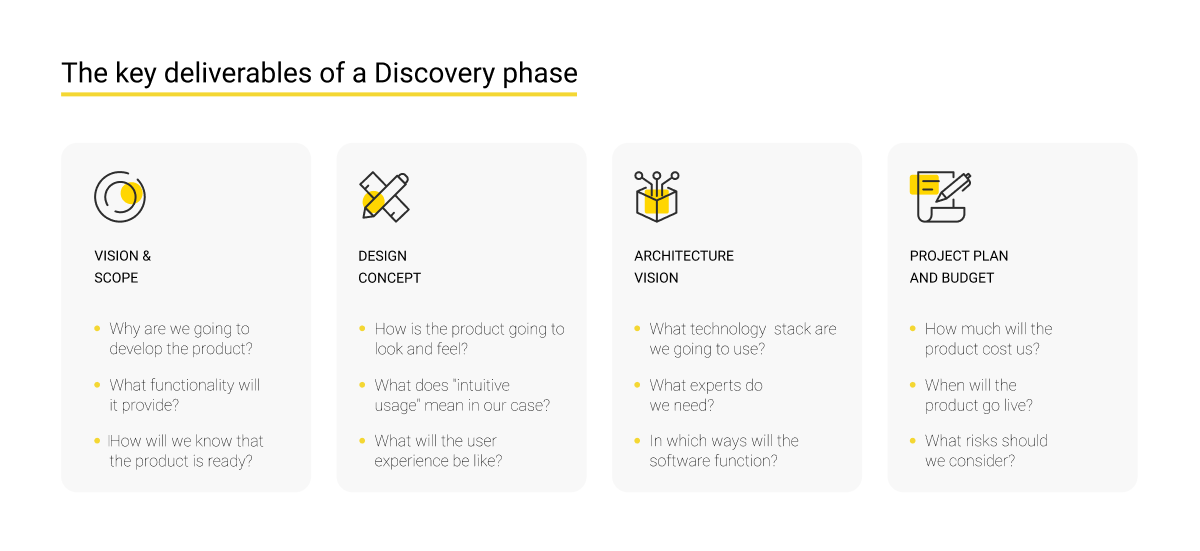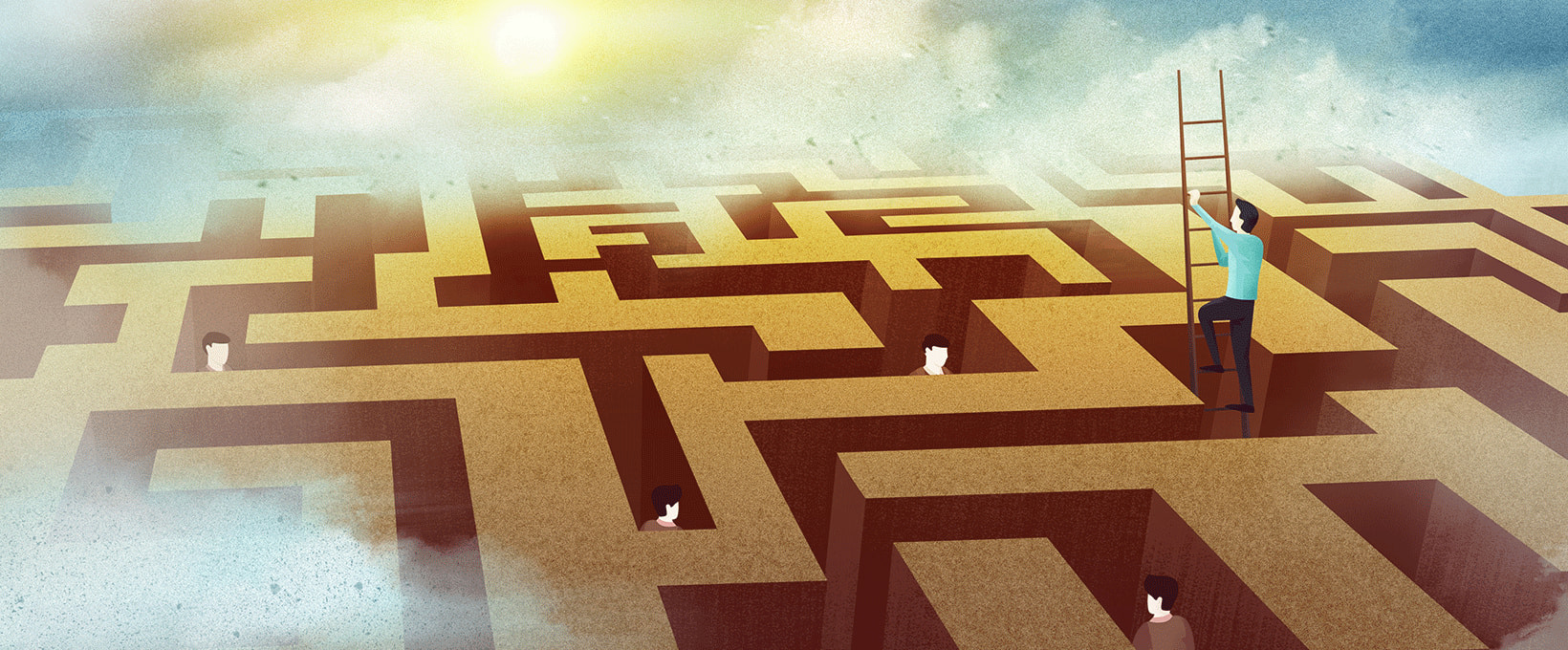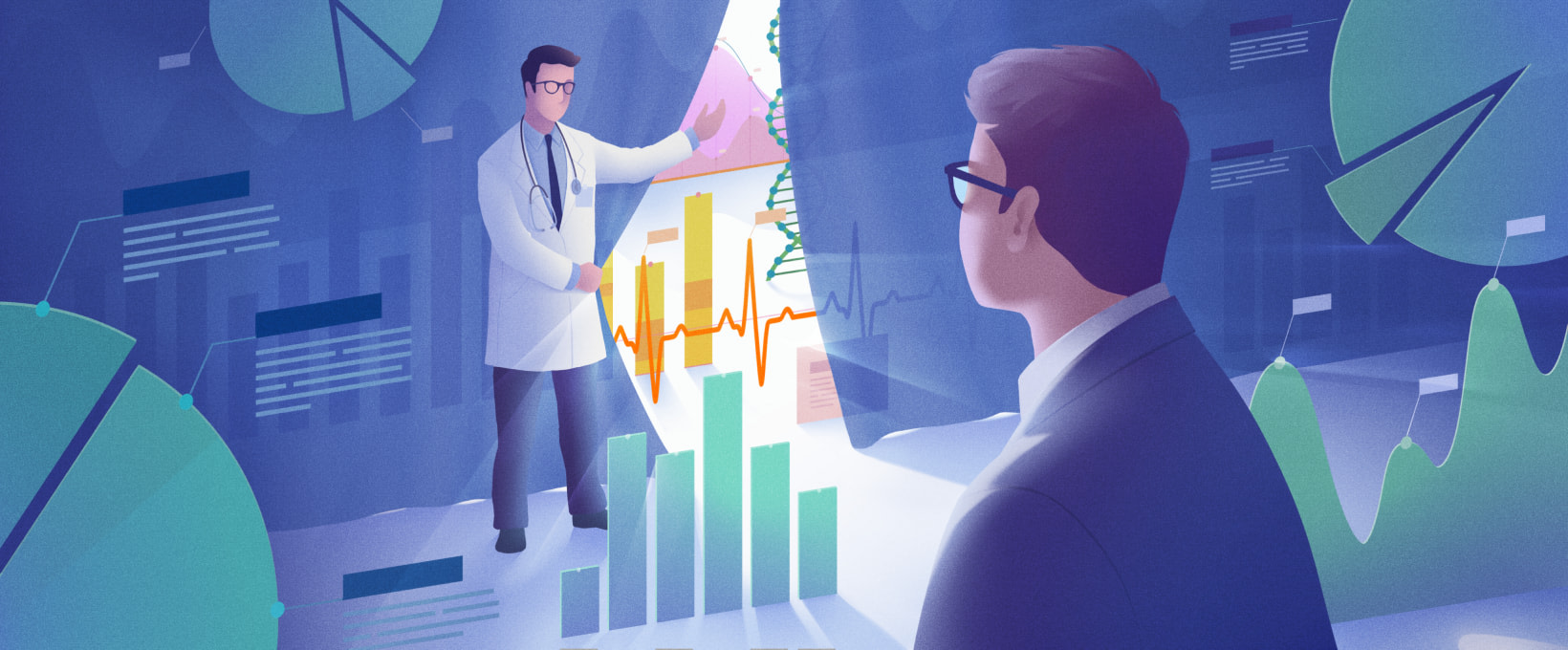- What is a project discovery phase?
- Business challenges the discovery phase solves
- Deciding on the product’s feasibility
- Estimating the cost and timelines
- Reaching an agreement
- Discovery phase deliverables
- Vision and Scope document
- Design Concept
- Architecture Vision
- Project plan and budget
- How to make the discovery phase even more effective
- Wrapping up
Statistically, nearly half of business owners consider poorly collected requirements to be the reason why projects aren’t completed on time. Moreover, about half of software products cost customers more than expected. Therefore, when starting an IT project, having precise estimations of its duration and cost based on accurately elicited requirements is essential. These are reflected in discovery phase deliverables. Read on to learn what results Andersen’s skilled Business Analysts provide to our customers after the completion of project discovery to substantially streamline the work on their projects.
What is a project discovery phase?
When just starting their software development projects, business owners already know why they need them and have a general vision of what they want to create. Nonetheless, it’s recommended that they start any of their initiatives with a discovery phase. This is true when developing corporate accounting systems, online stores, or mobile apps; working on internal projects and ones involving contractor teams; creating startups or new functional modules in existing enterprise software, etc.
The research stage generally lasts from two to six weeks and offers the following results:
- Clear and full business vision of the resulting product;
- Architectural vision of the product;
- Preliminary project plan.
Project discovery phase deliverables help clarify further development, mitigate risks, create a consistent and holistic vision of the product, and allow stakeholders to find common ground.
Business challenges the discovery phase solves
Below are the three most significant difficulties that are overcome during the research stage.
Deciding on the product’s feasibility
Sometimes, the products that seem the most promising at the beginning turn out to be a real disaster after they’re implemented. Software development is expensive, and companies spend millions on products that don’t pay for themselves. The discovery phase helps customers understand whether or not to embark on the development and in what way it should be implemented to be successful and profitable.
Estimating the cost and timelines
According to McKinsey’s research, 45% of software development projects overshoot budget, 7% of them run over time, and 56% of them deliver less value than predicted. This happens due to a lack of planning that precedes development.
When launching a new project, every top manager wants to have a well-thought-out plan. It’s hard to imagine that one wants to create a software product so much that its cost and timelines don't matter to them.
However, no one can make estimations of an abstract idea. To make accurate estimations, a software development team needs a detailed vision of a product and a clear understanding of its technology stack. The more vague the project requirements are, the more time and money the customer will spend on it. Stating a clear project scope and limitations allow for the optimal price-quality balance.
Andersen's experience proves that Agile discovery phase deliverables provided in a professional manner decrease the project budget and save customers an average of 25% of its total cost.
Reaching an agreement
Misunderstandings among the project’s participants can cost customers substantial amounts of money and lead to many sleepless nights for the product team. Remarkably, sometimes business owners spend about half of the total project cost to rework the solution. This might be needed due to insufficient requirement elicitation resulting in a vague project scope and an unclear understanding of it by the stakeholders. Therefore, before diving into the development, it’s good practice to bring into alignment stakeholders’ ideas regarding the product and document them.
Discovery phase deliverables
Every project is unique and so is its discovery phase. At Andersen, we have launched over a thousand projects and formed our proven approach based on our successful experiences. The key deliverables that our experienced Business Analysts provide as part of our project discovery services are the following.

Vision and Scope document
The document states a clear and consistent product vision that includes the following:
- Business goals;
- Key features;
- Acceptance criteria;
- Project scope;
- Market opportunities;
- User personas;
- Glossary.
This deliverable is the foundation and starting point for any specialist who embarks on a project.
Design Concept
Having a clear product vision is a good start; however, the devil is in the details. The look and feel of a product are sometimes even more important for users than its functionality. No one will stick with an app that lacks user-friendliness, and the most worthwhile idea might fail due to bad implementation and weak user experience.
The Design Concept includes an understanding of who the users are, the way they think, and what software they need. The main section of the document includes wireframes that demonstrate the product's look and feel. After the Design Concept is created, it’s tested on real users. They confirm that the product is useful and convenient and that it is exactly what they need.
Architecture Vision
When a clear vision is developed of what the product will look like from the user perspective, an IT Architect designs its high-level internal structure and decides on the optimal technology stack to reduce costs while meeting all technical requirements.
The Architecture Vision includes, but is not limited to:
- Technology stack;
- Quality attributes and technical limitations;
- Key architecture decisions that are going to influence the whole development process;
- High-level application structure;
- Infrastructure scheme.
Project plan and budget
Finally, estimations on the project duration and cost are made. These are reflected in the project schedule, roadmap, and cost estimate.
How to make the discovery phase even more effective
The deeper the stakeholders dive into the discovery phase, the more efficient results it will bring. Therefore, having well-established communication in place between the team members and with stakeholders is extremely important. At this stage, meetings are usually held on a daily basis to get everyone aligned on the project goals and particularities.
It’s also extremely important to test all the ideas from the point of view of potential users. To do this, use prototypes and improve them until you’re ready to move to the next stage.
To make the most out of project discovery, you shouldn’t underestimate its complexity. Entrusting this work to a Project Manager, Product Owner, Business Analyst, or Software Developer alone is a surprisingly widespread practice. However, a full-fledged team at this stage should include the following roles:
- Product Owner;
- Project Manager;
- Business Analyst;
- UX/UI Designer;
- Software Architect;
- One or two Middle-level or Senior-level Software Developers.
In fact, it’s impossible to shorten the above list without losing quality.
And last but not least, the project discovery phase is the best time for experimenting. Therefore, don’t stop generating ideas. Although most of them will then be discarded, even the most incredible ones can be useful. Design thinking with its five main principles is probably the best approach to use.

The main idea of this approach is to generate ideas and test them. Avoid the temptation to stop on the very first and most obvious idea or implementation option. In the later stages of the product life cycle, such experimenting is going to cost much more, therefore, it’s crucial to generate and test as many ideas as possible in the early stages.
Wrapping up
Having well-documented project discovery phase deliverables in place brings substantial value to a project and deals with potential problems. These would be impossible to solve in the later stages of the development without paying a lot more than was initially planned.
Andersen’s discovery team possesses deep expertise in business analysis. We apply a proven methodology to evaluate project risks and provide our customers with accurate estimations, a clear project vision, and a detailed roadmap. Contact us for a free consultation on your business ideas.














